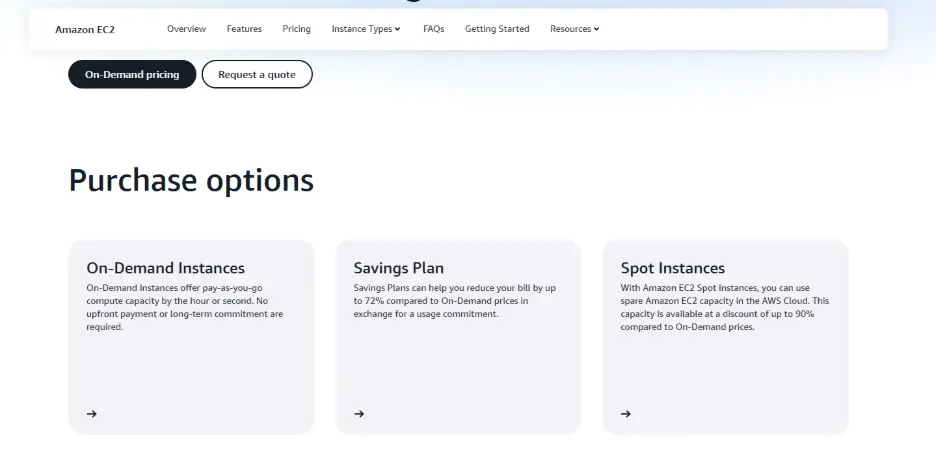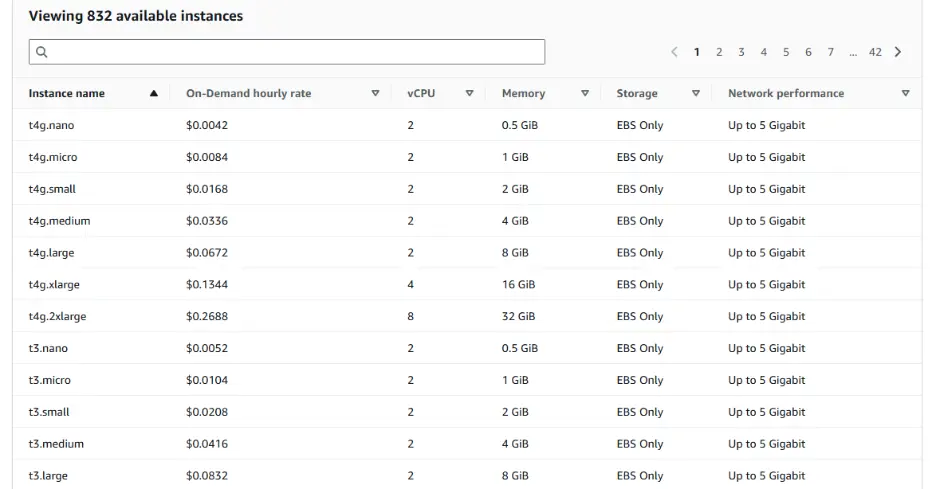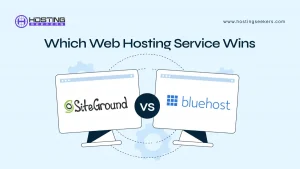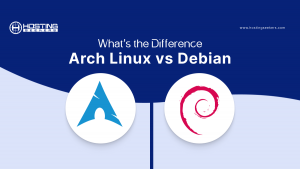
DigitalOcean vs AWS – Which One Should You Choose in 2025?
Comparison Published on : July 30, 2025When speaking about cloud hosting, DigitalOcean and AWS are the popular names. Whether you are a startup developer looking for simplicity or an enterprise searching for scalable infrastructure, understanding the key differences between these two platforms is vital.
In these articles, we will break down the difference between DigitalOcean and AWS to help you make an informed decision for your next cloud hosting. Let’s get started.
What is DigitalOcean?
DigitalOcean is a cloud hosting provider that offers cloud computing services and infrastructure as a Service (IaaS). Headquartered in New York City, it has data centers worldwide. The company provides a range of products and tools, including Kubernetes, Droplets, Gradient AI, and more.
DigitalOcean also offers developer tools, including API, CLI, support plans, monitoring, and more. Apart from products and tools, it provides a range of solutions including web hosting, AI and Machine learning, eCommerce, and a complete range of web and cloud solutions.
How does Digital Ocean Work?
DigitalOcean is primarily known as a ‘developer cloud’ because it relies on open-source libraries and frameworks to get started. At the core of DigitalOcean’s offerings are its Droplets, which are scalable virtual machines, and Kubernetes services that make containerized application deployment and scaling straightforward.
For teams working with AI and ML, GradientAI provides GPU-powered Droplets, 1-click model deployments, and tools like Recommendation Engines, Code Copilot, and HR Knowledge Assistants, making it easier to build, train, and scale AI-powered apps.
Developers can deploy faster using the App Platform, a fully managed platform-as-a-service (PaaS) solution, or leverage Cloudways, which simplifies managed cloud hosting without the need for extensive technical expertise.
Under the computer umbrella, users get access to CPU-optimized Droplets and serverless Functions to handle variable workloads with cost efficiency. Networking is secured and streamlined with built-in features such as Virtual Private Cloud (VPC), cloud firewalls, load balancers, DNS management, DDoS protection, and Partner Network Connect for integrations.
For storage and backup, DigitalOcean provides Spaces Object Storage, Block Storage Volumes, Snapshots, and automated backups via SnapShooter. On the database side, it supports a variety of managed databases, including MongoDB, MySQL, PostgreSQL, Kafka, Valkey, and OpenSearch, suitable for high-performance, scalable applications.
Pros and Cons of DigitalOcean
| Pros | Cons |
| Simplicity and user-friendly. | Restricted service offerings. |
| Cost-effective pricing. | Geographic availability. |
| Seamless scalability. | Restricted enterprise features. |
| Robust API and integration. | Limited database options. |
What is AWS?
Amazon Web services (AWS) are among the cloud platforms provided by Amazon that allow people and companies to use IT services like storage, servers, and databases via the internet. It will enable you to rent their services instead of maintaining and buying physical computers. Also, Amazon comes with the largest data center in the world.
Since its inception in 2006, Amazon Web Services has delivered cloud services to millions of clients worldwide, enabling them to trust their scalable and relevant infrastructure with their most critical applications and solutions.
How Does AWS Work?
AWS continues to lead in the AI and machine learning space with services like Amazon SageMaker, which acts as a full-fledged development environment for building, training, and deploying machine learning models. Adding to its generative AI ecosystem, Amazon Bedrock allows users to build and scale applications using foundation models.
At the same time, Amazon Q Business serves as a generative AI assistant to boost productivity through intelligent insights.
Nova, another offering in this space. It helps to optimize AI applications with robust, cost-effective foundation models. It comes with four Amazon Nova models, including Nova Lite, Nova Pro, Nova Micro, and Nova Premier.
Furthermore, AWS offers Amazon Aurora, a high-performance, serverless relational database service that supports PostgreSQL, MySQL, and DSQL, providing both flexibility and scalability. For object storage, Amazon S3 is an object storage service that offers data availability, security, and performance.
For customer experience and support systems, Amazon Connect stands out as an AI-powered omnichannel cloud contact center, making it easier for organizations to deliver seamless and intelligent customer service.
Pros and Cons of AWS
| Pros | Cons |
| Allows for easy scaling of resources. | Hard to understand, especially for beginners. |
| Highly reliable and secure infrastructure | AWS can be expensive. |
| There are various tools and services to deploy applications easily. | Securing resources can be challenging. |
| Manages many aspects of infrastructure. | Customer support is expensive. |
DigitalOceans vs AWS: Quick Comparison
| Features | Digital Ocean | AWS |
| Target Audience | Developers, startups, and SMES. | Enterprises and all types of businesses. |
| Pricing | Simple, transparent | Complex, pay-as-you-go model |
| Data Centers | 16 distributed data centers across nine regions | Global data centers. |
| Services Offered | A wide range of services, including cloud, hosting, storage, and more. | 200 fully featured services |
| Best For | Beginners and simple deployments. | Enterprise apps, complex architectures. |
| Support | Basic support (paid tiers available) | Extensive enterprise-level support (at higher cost) |
| Flexibility | Limited to predefined setups | Highly customizable infrastructure |
DigitalOcean vs Amazon: Pricing Comparison
DigitalOcean Pricing
Digital Ocean comes with a range of pricing for different products and services. Its pricing is flexible and straightforward with monthly subscriptions. Let’s check out the pricing.
| Services | Price |
| Gradient AI | Starting at $0.15//M tokens |
| GradientAI GPU Droplets | Starting at $1.49/GPU/hour |
| Droplets | Starting at $4/ month |
| Kubernetes | Starting at $12/month |
| App Platform | Basic Free |
| Functions | Basic Free |
| Databases | Starting at$15/month |
| Spaces | Starting at $5/month |
| Volumes | Starting at $10/month |
| Load Balancers | Starting at $12/month |
| Container Registry | Basic Free |
| Support Plans | Free |
| Uptime | Free |
| Backups |
|
| Additional GPU Options | Pricing depends on the GPU you select |
AWS Pricing
Most of the AWS pricing is on demand or includes a pay-as-you-go model with an extensive range of services. Your bill is calculated based on the resources you use, including location, storage, operating system, and more. The five main pricing plans of AWS include;
- Pay-as-you-go
- Free Tier
- Saving Plans
- Spot Instances
- Reserved instances
1. Pay-as-you –go
This is the most flexible pricing plan, enabling you to rent resources on demand and pay only for the ones you utilize.
2. Free Tier
This plan allows you to try the Amazon services without any charge. There are two sub-pricing plans in the free tier: the free plan and the paid plan. In the free plan, you can get up to $200 free tier credits and include free usage of selected services. In the paid plan, you get access to all AWS services and features, along with $200 credits.
3. Saving Plans
Savings plans provide low prices compared to other services. It offers minimal pricing options for Amazon EC2, AWS Lambda, and AWS Fargate usage. Therefore, when you opt for the savings plans, you will be charged the discounted savings plan price for your usage.
4. Spot Instances
Amazon Web Services (AWS) provides Spot Instances as a cost-effective way to utilize unused EC2 capacity. These instances allow you to access the same infrastructure at significantly reduced prices.
5. Reserved Instances
Reserved instances help you save money. With this pricing plan, the longer the tenure, the more you pay, the more you save. Reserved instances offer substantial savings up to 72% compared to on-demand pricing, making them ideal for predictable, long-term workloads. When tied to a specific Availability Zone, they also include a capacity reservation, ensuring reliable instance availability whenever needed.
To help you understand more, let’s check out the pricing of a popular product, Amazon EC2.
Amazon EC2
It comes with three types of pricing, including on-demand, savings, and spot instances pricing.

Let’s check out the On-demand instances pricing option. This allows you to pay for the computer capacity based on either an hourly or a per-second rate, with no long-term commitments. It frees you from the prices and obstacles of planning, purchasing, and maintaining hardware. You need to select the options that include location, region, operating system, vCPU, and instance type.

Depending on your preferences, you can get the pricing options as mentioned in the image below.

Other products’ pricing is similar to Amazon EC2; all you need to do is select the region, type, storage, and go for the plan that suits your business requirements.
DigitalOcean vs AWS: Ease of Use
Both DigitalOcean and AWS EC2 are quick to set up, allowing you to launch servers within minutes. Their interfaces are user-friendly, but when comparing the two, DigitalOcean stands out for its clean and minimal dashboard. Unlike AWS, which can feel overwhelming with its wide range of services and nested menus, DigitalOcean keeps things focused and straightforward, ideal for developers who want to get started without navigating complex configurations.
Overall, DigitalOcean takes the lead in terms of usability. Its straightforward pricing, intuitive structure, and easy-to-understand services make it a better choice for beginners or teams without a dedicated DevOps setup. If you’re looking for a hassle-free experience, DigitalOcean is the more accessible option.
DigitalOcean vs AWS: Scalability
Both DigitalOcean and AWS are highly scalable and manage several requests without any errors. The primary distinction in scalability comes from the broader ecosystem and range of supplementary services that each platform provides.
Amazon Web Services (AWS) features a wide array of cloud solutions beyond basic server hosting. As your website or application grows, AWS makes it easy to increase server capacity, and there’s virtually no limit to integrating additional services to enhance performance and reliability.
DigitalOcean, while not as extensive in secondary services, is still designed for straightforward scalability. Applications hosted on DigitalOcean can expand using features like droplet resizing, which lets you quickly add processing power and storage. You can also scale applications by adding more nodes via the API, ensuring your infrastructure grows alongside your needs.
DigitalOcean vs AWS: Support
Speaking about the support, both platforms provide robust support. It includes support plans that offer access to troubleshooting tips, unlimited customized support, and quick response times. Its support plans include starter, developer, standard, and premium.
AWS can be challenging for beginners, so to help them understand, it offers support plans, including developer, business, enterprise on-ramp, and enterprise support. To help you recover from operational challenges, it provides you with proactive communications and planning, automation, advisory, and cloud expertise to help you achieve business results with high scalability.
When to Choose DigitalOcean or AWS?
The final choice of selecting between DigitalOcean and AWS depends on your requirements. Here’s a breakdown of when to choose what
Select DigitalOcean if;
You are a beginner, developer, startup, or SMB looking for an affordable, simple, and developer-friendly cloud solution.
Select AWS if;
If your application demands a broader range of services, maximum scalability, enhanced security, and you have the technical expertise and budget to match, then a more robust cloud platform like AWS is the ideal choice.
Digital Ocean vs AWS: Summing Up
|
Cloud Provider |
Best For |
Key Reason to Choose |
| DigitalOcean | Beginners, Startups | Offers cost-effective, simple, and easy-to-use cloud hosting solutions |
| Amazon Web Services | Large Businesses, Enterprises | Ideal for leveraging a vast ecosystem of cloud services and scalable infrastructure |
Frequently Asked Questions
Q1. Do I need to be a tech expert to use AWS or DigitalOcean?
Ans. DigitalOcean is famous for its straightforward dashboard and easy setup steps, so you won’t feel lost if you’re new to cloud hosting. AWS offers a lot of flexibility and tools, but that also means there’s a learning curve.
Q2. Which one to choose, DigitalOcean or AWS?
Ans. If you’re a developer, freelancer, or running a small business and want hassle-free cloud hosting without hidden fees, you can select DigitalOcean. Whereas, if you are operating a larger company, have complex requirements, or need a massive menu of cloud services, AWS is the best option.
Q3. Are there differences in OS compatibility?
Ans. DigitalOcean primarily supports Linux distributions, while AWS supports both Linux and Windows environments, making it more versatile for heterogeneous infrastructures.
Q4. How does support compare between the two?
Ans. DigitalOcean provides basic support with simple access, while AWS offers multiple support tiers, including premium enterprise options with dedicated account management.
Q5. Can I migrate between DigitalOcean and AWS easily?
Ans. While migration is possible, it may require some manual work and technical adjustments due to differences in infrastructure and service offerings. DigitalOcean focuses on a more straightforward setup, whereas AWS offers a broader ecosystem, so aligning resources may need extra steps




